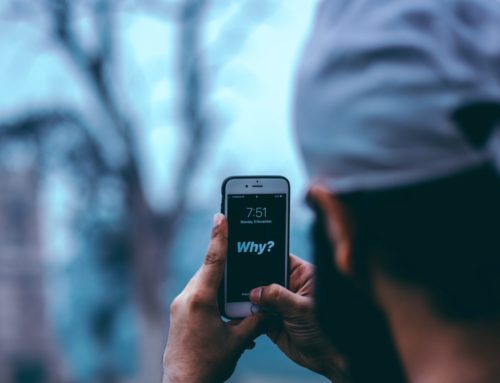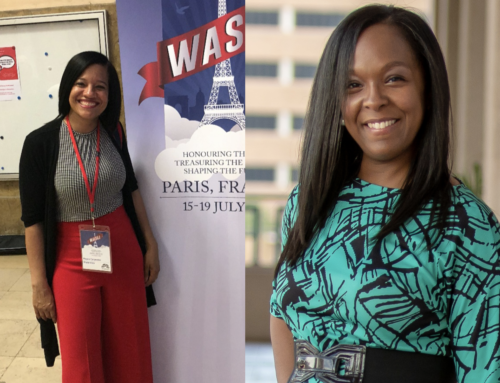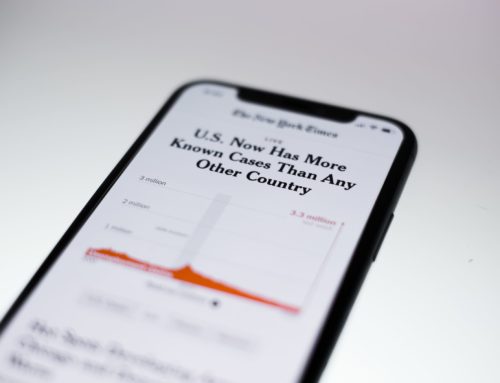PART I
Supporting Better Health Outcomes
You might have read the title of this introduction and thought, how are interpreters responsible for better health outcomes?
The Institute for Healthcare Communication has reported that the better the relationship is between healthcare provider and patient, the more likelihood there is of good health outcomes (2019, healthcarecomm.org). As interpreters, we know the importance of good communication for building relationships.
Increasingly, the healthcare system is also recognizing the importance of interpreters in supporting good communication.
In my home state of Minnesota, many interpreters have specialized to perform most of their work in medical settings. I see more and more conversations between colleagues asking each other, “How do we do this work better?” RID has an active member section, Interpreters in Healthcare, which hosts a Facebook page for members to actively share information and resources with each other.
I am excited to see this issue of VIEWS include a collaborative article on healthcare interpreting from four slightly different perspectives:
- a Deaf physician who recently graduated from medical school,
- a designated interpreter working with a Deaf physician,
- a freelance interpreter who specializes in medical work, and
- an interpreter coordinator with a dual role which includes functioning as a patient liaison.
Each of these individuals shares their perspectives on both good and bad situations that arise in the complex work of medical interpreters. They discuss how to best support the communication needs of hearing and Deaf consumers. They emphasize the need for clear communication between patient, practitioner, and interpreter. In the examples of designated interpreters working with Deaf physicians, they describe how important it is for the interpreter to understand the doctor’s role and function and to be clear on how best to support the communication desired by the medical provider so they may build the critical relationship that is required.
I appreciate the thoughts of each of these authors. I hope you will also find them thought-provoking and use this opportunity to continue the discussion with your colleagues. Each of us should look at our own work and consider how we might best support the communication required to foster successful patient/provider relationships and ultimately achieve better health outcomes.
PART II
My name is Zachary Featherstone, and I identify myself as culturally Deaf. I recently graduated from medical school; I had ASL interpreters throughout my schooling, but unfortunately, I had both outstanding and poor interpreters. Over the course of my clerkships, I worked with a team of three designated interpreters during my third year and a team of two specialized interpreters during my fourth year. I hope you noted the different words I used in the previous sentence: designated interpreters v. specialized interpreters.
My team of designated interpreters all had similar philosophies of what a designated interpreter entailed. To them, it was a mutually beneficial partnership with both parties coming to agreement on how certain tasks were to be done. For instance, if the patient in the room became emotional for whatever reason, it was okay for the interpreter to place their hand on the patient to comfort them. If they arrived at work before I did, it was okay for them to talk with the nurses and find out where my patients were located and then give that information to me when I arrived. It was okay for them to befriend other physicians or nurses with whom I was working at the time.
Those true examples may seem innocent at first, but upon further inspection, they cause more harm to me than you may realize. By placing their hand on the patient, the interpreters took away my privilege of comforting my patient. By conversing with the nurses and then relaying that information, the interpreters took away my privilege of building my relationship with the nurses and letting them see me work proactively to build their trust in me. By befriending those colleagues who were new to me, the interpreters took away my privilege of learning from them; where preceptors would usually give me the clinical pearls to improve myself as a doctor, those colleagues would forego this and instead converse with the interpreters during downtime.
After many attempts to resolve these issues with my team, I asked for a new team. With this new team, I made my expectations clear that I didn’t view them as designated interpreters, but as specialized interpreters. When they had concerns, they were typically only communication-related concerns, which I happily worked to resolve with them. From there, my clerkship experiences blossomed.
These interpreters allowed me the space to learn from my mistakes. They understood that I was there as a medical student, to learn and thrive.
They were humble and knew their role. As they demonstrated that to me, I was able to trust them to expand their role as not only interpreters, but also colleagues and friends.
There is a wide spectrum of Deaf professionals with different philosophies; the same is true for designated interpreters. I know this is not reflective of every interpreter who identifies as a designated interpreter, but there is lacking a standard definition of what that means. The ‘clinical pearl’ of this article is to encourage more dialogue of what it truly means to be a designated interpreter and the expectations thereof.
Part III
My name is Todd Agan. I am the lead interpreter for a Deaf physician. In 2001 I began interpreting for Deaf medical students, residents, fellows, and practicing physicians. With this article, I hope to show that not only is the task of interpreting different in this particular context, but more importantly, we need to be respectful in how we frame our relationship with the Deaf healthcare provider (DHP).
There are many ideas, concepts, and terms that come up when working with a DHP that interpreters are not exposed to in traditional healthcare settings. We often need to know more information about anatomy, physiology, microbiology, and pharmacology, to name just a few. Additionally, interpreters for DHPs interpret advanced medical terminology, where knowing Greek and Latin roots as well as a smattering of German helps to be able to decode and accurately interpret healthcare terms. We need to be familiar with the healthcare education system: how does a healthcare trainee become a healthcare provider? Furthermore, we may need to be familiar with the insurance reimbursement system, legal aspects of healthcare, the ethics of healthcare, and self-care. Most of these issues do not come up in traditional healthcare interpreting assignments.
Perhaps the most important difference between traditional healthcare interpreting and interpreting for a Deaf or Hard of Hearing healthcare provider has to do with the relationship between the interpreter and the consumer. The relationship with a patient may be one in which we see the patient regularly for various healthcare appointments, and we may even see the same patient in other, non-healthcare-related settings. Interpreting for DHPs, however, often means that the relationship may be more deep and longitudinal.
The designated interpreting paradigm is a still-emerging archetype in our field.
This approach has been adopted effectively by many Deaf professional/interpreter teams throughout the US. Many Deaf professionals have their own designated interpreter(s). It is important to recognize, though, that not all Deaf professionals find this arrangement desirable. I have worked with DHPs who prefer a more traditional consumer-interpreter arrangement.
We need to be cognizant of the work we do with DHPs. We need to follow their lead, and ensure that their needs are met. How we envision our working relationship with the consumer may be different than how they envision it. It is critical that we respect and defer to the DHP’s preference for establishing our role within their workplace.
PART IV
As an interpreter working primarily in medical and mental health environments, critical components of my work include: understanding and navigating the medical environment, matching patient/provider goals, being a languaculture broker, and thinking outside the box to ensure comprehensive patient understanding. For example, many people would incorrectly interpret congestive heart failure (CHF) as ‘heart failure’. Although the problem originates from the heart, the correct concept is a buildup of fluid in the lungs. Many times we leave it up to the doctor or nurse to clarify a concept if we aren’t sure how to describe something, but healthcare interpreters owe it to the patients to become knowledgeable about healthcare settings, including the goals of the environment, provider, and patient.
Another critical component of healthcare interpreting is balancing the linguistic needs of the patient with cultural mediation between patient and provider. Experienced healthcare interpreters will often ‘think outside the box’ to support the provider in accomplishing their goals.
For example, when a patient has an x-ray of the chest area, they are often asked to hold their breath. I will make the suggestion that the provider explains the procedure to the patient in its entirety before they begin. The three of us come to an agreement about how to cue the patient to hold their breath and release it. Ensuring the patient understands the instructions is essential to generating accurate test results while simultaneously fostering patient dignity and respect.
I also understand that the provider’s goals must be my goals.
I recently interpreted for a patient who had a kidney transplant. The provider was not confident that the patient understood he must not bend, lift, or twist for four weeks or he may damage the new kidney. Through my medical interpreter training and my knowledge of Deaf culture, I understand that many Deaf patients incorporate new concepts through those which are more familiar. In this situation, the provider’s goal was to ensure the patient understood the instructions before discharge. I asked the patient if he had ever eaten a bacon, lettuce, and tomato sandwich. I used the first letter of each word to help the patient remember the provider’s instructions. No B (Bacon)-Bending, no L (Lettuce)-Lifting, and no T (Tomato)-Twisting until the following month.
A concept that can be difficult to communicate to providers is the need for a Certified Deaf Interpreter (CDI). We all know that a CDI is helpful when a patient uses non-standard signs, like home signs, or is from another country. But when a patient experiences a major trauma, they are so focused on the immediate crisis that their second language is much harder to maintain. This means that even when the hearing interpreter can understand the patient’s signing style, a Deaf patient in a critical situation may prefer communicating through a native signer, who I refer to as a ‘language specialist’. The term ‘specialist’ is often used in healthcare settings. For example, a cardiologist, a specialist who cares for the heart, may call on a more unique specialist, an electrophysiologist. In the same vein (yes… pun intended), a language specialist (the hearing interpreter) may need the assistance of a more native specialist who can assist in ensuring the patient’s communication needs are met and the provider’s goals are accomplished. Using the same terminology as the medical provider makes it much easier to accomplish the mutual goal of excellent patient care.
I have a couple pieces of advice for healthcare interpreters, regardless of whether the interpreter is just entering the field or has decades of experience. The first is to utilize resources such as the internet, apps, and specialized workshops to enhance your knowledge. The other is to become involved in regular peer consultation or structured supervision to reduce the negative effects of vicarious trauma or work-related stressors and promote continuous learning and self-analysis.
As professional healthcare interpreters, in addition to incorporating biomedical ethics in our daily work, we also have the responsibility to maintain the goals of the environment, no matter the meeting or appointment type. This includes fidelity to the message being conveyed and to the desired result of the members involved, and an awareness of what needs to be accomplished in that moment. Our willingness to pursue ongoing professional growth and education ultimately translates to better services for the Deaf patients we serve.
PART V
Hello, my name is Shawn Norris and I am an American Sign Language Interpreter, Patient Liaison, and Interpreter Coordinator at Flagler Hospital in St. Augustine, Florida.
Here at Flagler, we serve a large Deaf population, averaging over 120 appointments a month, and each person who comes here has unique communication needs that it is my responsibility to ensure we fulfill. We do this by using Deaf-owned agencies and appropriate resources such as Deaf and hearing interpreters, Video Remote Interpreting, and standards for interpreter placement. We also use patient charts to help us have shared context with the physician and the patient, which allows for a more robust interpretation.
A key resource that I find beneficial is Certified Deaf Interpreters and Deaf Interpreters. Recently I had a situation where a Deaf patient came in with some heart problems, with several Deaf family members and friends, and several staff members rushing to care for the patient. I was immediately overwhelmed trying to interpret for all of them, so I messaged the agency to send me a DI. The DI was wonderful!
We did a zone interpretation of sorts; the DI worked with the Deaf companions, I worked with the medical staff, and we were able to facilitate successfully between the two groups. It was a beautiful experience! The patient did better, the Deaf family and friends were allowed to participate as concerned companions, and the staff were able to focus on the patient’s needs. Some interpreters may feel they do not need to have Deaf Interpreters, but what is important is the patient’s needs. I have Deaf parents and I am RID certified, but a job may still require a DI or another interpreter if I am not a good fit.
Another topic I would like to expound upon is VRI. I think one of its best uses is in triage, determining the patient’s situation whether they need to be fast-tracked or in a more critical unit. Another positive use is during the night for non-critical patients, where an on-site interpreter is not needed; however, we are accommodating of their preference for communication. When I speak with those Deaf patients about VRI, they are amenable to it but express concerns if something were to happen during the night. I reassure them that we have an interpreter on-call who is ready to come in right away, without the need for an agency to look for an available interpreter. Another concern that has been expressed to me is the fear that once they use VRI, they will be stuck with it and never receive on-site interpreters. I reassure them that won’t happen, since we go by what the situation demands, but we will accommodate their preferences as is their right. These patients are here because of serious conditions, and they should focus on getting better, rather than on communication access. This is where I come in to provide that support.
Regarding interpreter placement, specifically where interpreters sit when not interpreting, our current policy is that interpreters should sit outside the patient’s room, just as the other staff do. One thing I would like to clarify, though, is that the interpreters should be within line of sight of the Deaf patient. Those who are DeafBlind will have interpreters in the room with them; this may apply to any unique situations as well. This policy is not strictly enforced, since we should be sensitive to a patient’s needs. Often as interpreters we want a hard and fast rule, to have it black and white, but reality is mostly gray. Therefore, it is important to continually reassess the situation and the needs of the patient and adjust accordingly. If interpreters are uncomfortable in any way, they are free to talk with me and we can go from there.
For the medical community
…I would love to see more Deaf individuals hired as patient navigators: someone with institutional knowledge who can support the patient through the course of their care, from one appointment to the next, providing health and nutritional education among other things to improve their overall health.
The medical industry is moving away from a fee-for-service model and toward a more holistic approach with patients and their health. I want the same thing by having more Deaf service providers to help Deaf patients be more healthy.
Contributors
Richard Laurion, IC/TC, CI and CT, NIC Advanced, CATIE Center Director, has worked 35 years as an interpreter, mentor, entrepreneur and educator. He has served on interpreting boards, state commissions, and in nonprofit and for-profit organizations. He helped develop RID’s CMP/ACET program and is currently the PDC Chair. Richard has a special interest in healthcare. His interpreting practice is in emergency and emergent medical settings and he currently works with the Minnesota Hospital Consortium. Richard is committed to the mission of excellence in interpreting and actively promotes excellence through the professional development of interpreters working in healthcare.
Zachary Featherstone, D.O., recently graduated from Pacific Northwest University-College of Osteopathic Medicine this past May. He is currently working at Deaf Health Communication and Quality of Life Research Center at Gallaudet University as a Postdoctoral Research Fellow for his gap year before he begins his residency next year as a pediatrician.
Debra Lesser, CHI, CI and CT, received her CI & CT in 1999 and works full-time as a medical/mental health interpreter and healthcare consultant. She has participated in a variety of specialized workshops on the topic of healthcare interpreting, including the 40-hour Mental Health Interpreter Training in Montgomery, Alabama and the RIT/NTID Certificate of Healthcare Interpreting program. Debbie will complete her Master of Science in Healthcare Interpreting in May 2019. She resides in Atlanta, GA with her husband, four teenagers, and three dogs.
ASL Interpretation was provided by CDI Mistie Owens, certified since 2011. Mistie holds certification as a Qualified Mental Health Interpreter (QMHI) and provides workshops on healthcare and related topics to other interpreters locally, nationally, and online. She will complete her Master of Science in Mental Health and Wellness in June 2019.
Shawn Norris, NIC, Ed: K-12, currently works at Flagler Hospital located in St. Augustine, Florida as an ASL Interpreter, Patient Liaison, and Interpreter Coordinator. Due to being raised by Deaf parents, Shawn has close ties to the local Deaf community and has been serving as an advocate and volunteer. Shawn has been working in the interpreting field for over a decade, serving as an interpreter and manager for several companies and government agencies, such as FEMA and DHS. In the past, he established a local agency that provided interpreting services in ASL and Spanish which he later merged with a large national agency that created an office in Jacksonville. In addition to his extensive interpreting experience, Shawn is a long-time public speaker and has worked on several translation projects for a free Bible education work for the Deaf.
















Leave A Comment
You must be logged in to post a comment.